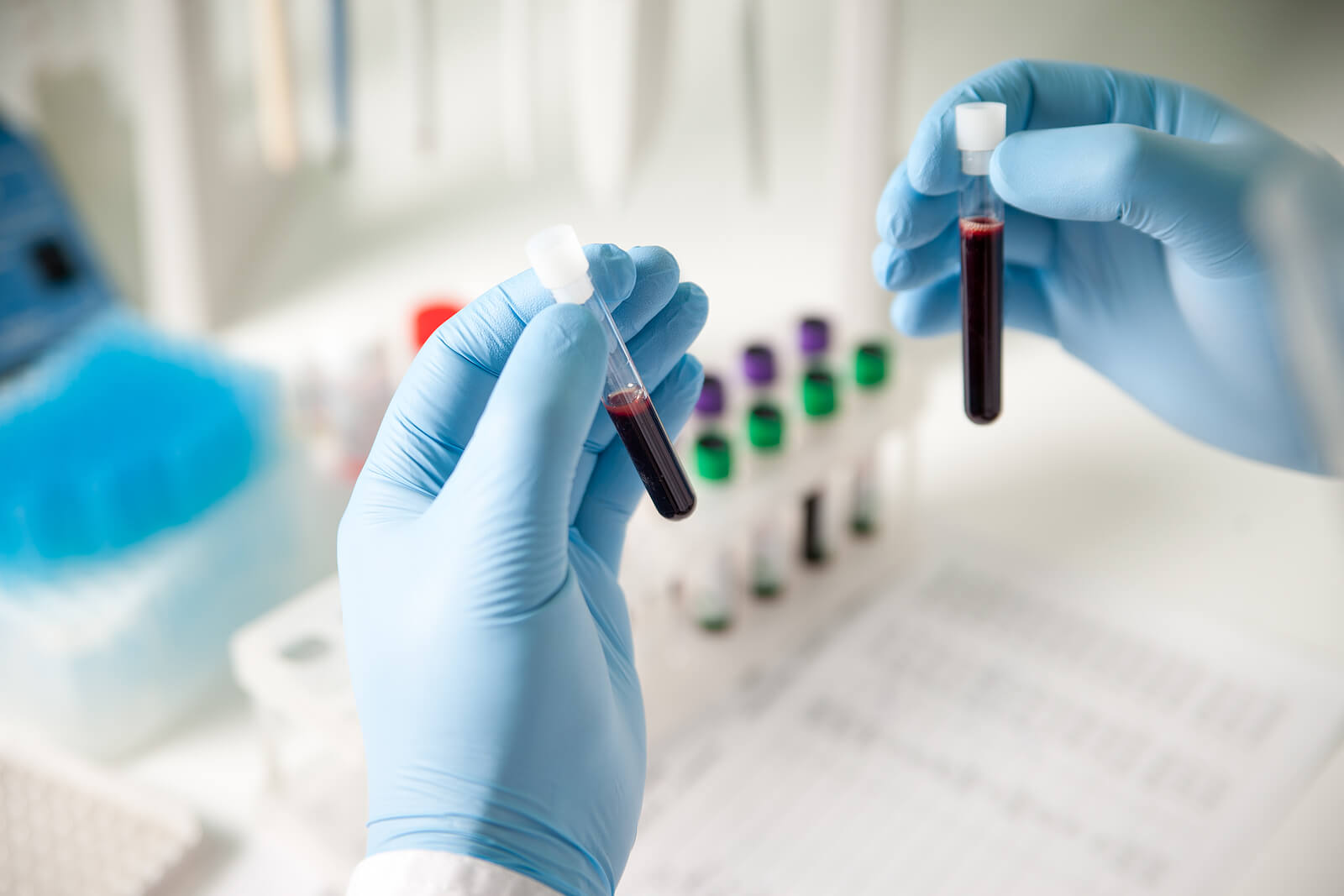How Arthritis Is Diagnosed

Diagnosing arthritis is more complex than most people think. First of all, arthritis isn’t a disease in itself but comprises a variety of manifestations with very similar symptoms to one another. Detecting the condition in its early stages is very important to improving the prognosis for the future. Today, we’ll take a look at how arthritis is diagnosed.
In general, specialists usually divide diseases into four types: Degenerative (the most common), inflammatory, metabolic, and infectious. With this categorization, they can guide the diagnostic process to later identify more precisely which variant the patient has developed. Let’s see what’s done to detect it and some possible differential explanations of the signs.
How arthritis is diagnosed
The first step in the diagnostic process for arthritis begins with the patient. They begin to experience pain in their joints that’s accompanied by mild bouts of inflammation. Although initially, both signs are very subtle, over time, they become more persistent and increase in intensity. We invite you to discover the symptoms of arthritis in order to better understand the subject.
When these signs appear, you shouldn’t postpone visiting a specialist for a long time. Try to associate possible explanations, such as trauma or overwork.
On your first visit to the doctor, they’ll do a general review in which they’ll consider your age, habits, underlying diseases, medical history, and family history, and will carefully examine your joints, as the Arthritis Foundation reminds us.
To complement any suspicions, the doctor will proceed to carry out laboratory tests and images for the diagnosis of arthritis. Only based on this will they be able to detect the possible variant of the disease and rule out other explanations.
The diagnosis of arthritis by means of laboratory tests

There are many laboratory tests to detect arthritis in patients. Johns Hopkins Medicine lists the following as the most common:
Antinuclear antibodies
Also known as ANA, this is a test designed to measure the levels of antinuclear antibodies in your body. This specific type of protein is associated with autoimmune diseases, as they usually attack the tissues themselves for no apparent reason. It’s very useful in diagnosing rheumatoid arthritis, scleroderma, and lupus.
Arthrocentesis
Arthrocentesis is also called joint aspiration and involves removing a sample of the synovial fluid. The analysis of this liquid allows doctors to detect pathogens and inflammatory processes, among other things. The removal of the liquid is done using a needle, although it’s a minimally invasive exam. Researchers endorse its use in order to diagnose joint diseases.
Often, the specialist will perform an ultrasound previously to guide the puncture as precisely as possible. Your recovery is immediate, although the area may swell a bit during the following 48 hours. In any case, you can use ice packs to lessen it.
A complete blood count
A complete blood count is capable of detecting the exact levels of red, white, and platelet cells in your blood. A low count of these is associated with some types of arthritis, so it’s an essential test in the diagnosis of the disease. The results should be interpreted in context, as some prior conditions and medications may affect them.
C-reactive protein
C-reactive protein is a type of protein that’s secreted by the liver in the event of any inflammation process. It’s related to some types of arthritis, among many other diseases. A high count of it is an indicator that there’s an inflammation process taking place in your body.
Erythrocyte sedimentation rate
Erythrocyte sedimentation rate is used to assess how quickly red blood cells fall to the bottom of a test tube. It’s a nonspecific test, although this action allows specialists to determine that there’s an underlying inflammation process. Despite this, it doesn’t allow us to know where it is or what causes it.
Other complementary laboratory tests are rheumatoid factors, uric acid, creatinine, hematocrit, HLA tissue typing, and urinalysis. The interpretation of the results together will give clues to rule out or confirm the disease.
Arthritis is diagnosed through imaging tests as well
To have a more accurate diagnosis of arthritis, the specialist will order imaging tests. These allow you to visualize abnormalities in the joints or bones. Among the most common, we can highlight the following:
Bone scan
Despite its limitations, radiography is still a great method for diagnosing arthritis. It allows us to distinguish changes in the joints and bone damage. In general, it’s more useful against advanced stages of the disease. You may experience acute symptoms that don’t match the X-ray images.
Ultrasound
Ultrasound’s used to assess the condition of tendons, ligaments, synovial tissue, and bone. It’s usually a complementary test to x-rays, sometimes it’s used to rule out other explanations for the symptoms.
Magnetic resonance
Magnetic resonance imaging allows more complete images to be obtained than X-rays, with precise details of the condition of the ligaments, muscles, joints, and cartilage. It’s not part of the standard diagnosis, although it’s a very important test for detecting some types of arthritis.
Arthroscopy
Arthroscopy is a procedure reserved for degenerative variants, especially for possible severe joint conditions (such as tumors). It consists of inserting an arthroscope through an incision in the joint to look at the affected area more closely.
Differential diagnosis of arthritis

Arthritis isn’t the only disease that produces the symptoms that may lead you to suspect it. In theory, there are dozens of conditions that can produce the characteristic signs. Researchers note the following among the main possibilities:
- Iron overload (hemochromatosis)
- Calcium overload (hypercalcemia)
- Muscle strain
- Tendinitis
- Lyme’s disease
- Sarcoidosis
- Sjogren’s syndrome
- Bursitis
- Enthesitis
- Transient synovitis
The Spanish Society of Pediatric Rheumatology reminds us that arthritis can be generated as a consequence of an underlying disease. For example, inflammatory bowel disease (IBD), which includes Crohn’s disease and ulcerative colitis, can produce this manifestation. Small trauma can also be the explanation.
In any case, each of these conditions will be ruled out during diagnosis. If any variety of arthritis is detected, the specialist will initiate the treatment that best fits the context. Although there’s no cure, arthritis can be treated to prevent the deterioration of the patient.
Diagnosing arthritis is more complex than most people think. First of all, arthritis isn’t a disease in itself but comprises a variety of manifestations with very similar symptoms to one another. Detecting the condition in its early stages is very important to improving the prognosis for the future. Today, we’ll take a look at how arthritis is diagnosed.
In general, specialists usually divide diseases into four types: Degenerative (the most common), inflammatory, metabolic, and infectious. With this categorization, they can guide the diagnostic process to later identify more precisely which variant the patient has developed. Let’s see what’s done to detect it and some possible differential explanations of the signs.
How arthritis is diagnosed
The first step in the diagnostic process for arthritis begins with the patient. They begin to experience pain in their joints that’s accompanied by mild bouts of inflammation. Although initially, both signs are very subtle, over time, they become more persistent and increase in intensity. We invite you to discover the symptoms of arthritis in order to better understand the subject.
When these signs appear, you shouldn’t postpone visiting a specialist for a long time. Try to associate possible explanations, such as trauma or overwork.
On your first visit to the doctor, they’ll do a general review in which they’ll consider your age, habits, underlying diseases, medical history, and family history, and will carefully examine your joints, as the Arthritis Foundation reminds us.
To complement any suspicions, the doctor will proceed to carry out laboratory tests and images for the diagnosis of arthritis. Only based on this will they be able to detect the possible variant of the disease and rule out other explanations.
The diagnosis of arthritis by means of laboratory tests

There are many laboratory tests to detect arthritis in patients. Johns Hopkins Medicine lists the following as the most common:
Antinuclear antibodies
Also known as ANA, this is a test designed to measure the levels of antinuclear antibodies in your body. This specific type of protein is associated with autoimmune diseases, as they usually attack the tissues themselves for no apparent reason. It’s very useful in diagnosing rheumatoid arthritis, scleroderma, and lupus.
Arthrocentesis
Arthrocentesis is also called joint aspiration and involves removing a sample of the synovial fluid. The analysis of this liquid allows doctors to detect pathogens and inflammatory processes, among other things. The removal of the liquid is done using a needle, although it’s a minimally invasive exam. Researchers endorse its use in order to diagnose joint diseases.
Often, the specialist will perform an ultrasound previously to guide the puncture as precisely as possible. Your recovery is immediate, although the area may swell a bit during the following 48 hours. In any case, you can use ice packs to lessen it.
A complete blood count
A complete blood count is capable of detecting the exact levels of red, white, and platelet cells in your blood. A low count of these is associated with some types of arthritis, so it’s an essential test in the diagnosis of the disease. The results should be interpreted in context, as some prior conditions and medications may affect them.
C-reactive protein
C-reactive protein is a type of protein that’s secreted by the liver in the event of any inflammation process. It’s related to some types of arthritis, among many other diseases. A high count of it is an indicator that there’s an inflammation process taking place in your body.
Erythrocyte sedimentation rate
Erythrocyte sedimentation rate is used to assess how quickly red blood cells fall to the bottom of a test tube. It’s a nonspecific test, although this action allows specialists to determine that there’s an underlying inflammation process. Despite this, it doesn’t allow us to know where it is or what causes it.
Other complementary laboratory tests are rheumatoid factors, uric acid, creatinine, hematocrit, HLA tissue typing, and urinalysis. The interpretation of the results together will give clues to rule out or confirm the disease.
Arthritis is diagnosed through imaging tests as well
To have a more accurate diagnosis of arthritis, the specialist will order imaging tests. These allow you to visualize abnormalities in the joints or bones. Among the most common, we can highlight the following:
Bone scan
Despite its limitations, radiography is still a great method for diagnosing arthritis. It allows us to distinguish changes in the joints and bone damage. In general, it’s more useful against advanced stages of the disease. You may experience acute symptoms that don’t match the X-ray images.
Ultrasound
Ultrasound’s used to assess the condition of tendons, ligaments, synovial tissue, and bone. It’s usually a complementary test to x-rays, sometimes it’s used to rule out other explanations for the symptoms.
Magnetic resonance
Magnetic resonance imaging allows more complete images to be obtained than X-rays, with precise details of the condition of the ligaments, muscles, joints, and cartilage. It’s not part of the standard diagnosis, although it’s a very important test for detecting some types of arthritis.
Arthroscopy
Arthroscopy is a procedure reserved for degenerative variants, especially for possible severe joint conditions (such as tumors). It consists of inserting an arthroscope through an incision in the joint to look at the affected area more closely.
Differential diagnosis of arthritis

Arthritis isn’t the only disease that produces the symptoms that may lead you to suspect it. In theory, there are dozens of conditions that can produce the characteristic signs. Researchers note the following among the main possibilities:
- Iron overload (hemochromatosis)
- Calcium overload (hypercalcemia)
- Muscle strain
- Tendinitis
- Lyme’s disease
- Sarcoidosis
- Sjogren’s syndrome
- Bursitis
- Enthesitis
- Transient synovitis
The Spanish Society of Pediatric Rheumatology reminds us that arthritis can be generated as a consequence of an underlying disease. For example, inflammatory bowel disease (IBD), which includes Crohn’s disease and ulcerative colitis, can produce this manifestation. Small trauma can also be the explanation.
In any case, each of these conditions will be ruled out during diagnosis. If any variety of arthritis is detected, the specialist will initiate the treatment that best fits the context. Although there’s no cure, arthritis can be treated to prevent the deterioration of the patient.
- Loza, S. M., Rosa, M., & Gascón, C. U. Artritis. Diagnóstico diferencial. 2020.
- Punzi, L., & Oliviero, F. (2009). Arthrocentesis and synovial fluid analysis in clinical practice: value of sonography in difficult cases. Annals of the New York Academy of Sciences. 2009; 1154(1): 152-158.
- Watt, I. (1997). Basic differential diagnosis of arthritis. European radiology. 1997; 7(3): 344-351.
Este texto se ofrece únicamente con propósitos informativos y no reemplaza la consulta con un profesional. Ante dudas, consulta a tu especialista.







